Tsuyoshi Hachisuka gently places skewered eel on a grill, preparing a much-loved Japanese delicacy that is now so endangered it commands eyewatering prices and the attention of international traffickers.
Consumed worldwide, eel is particularly popular in Asia, and perhaps nowhere more so than Japan, where remains found in tombs show it has been eaten on the archipelago for thousands of years.
Despite its enduring popularity, much about the eel remains a mystery. Precisely how it reproduces is unclear, and coaxing it to do so in captivity without intervention has proved unsuccessful so far.
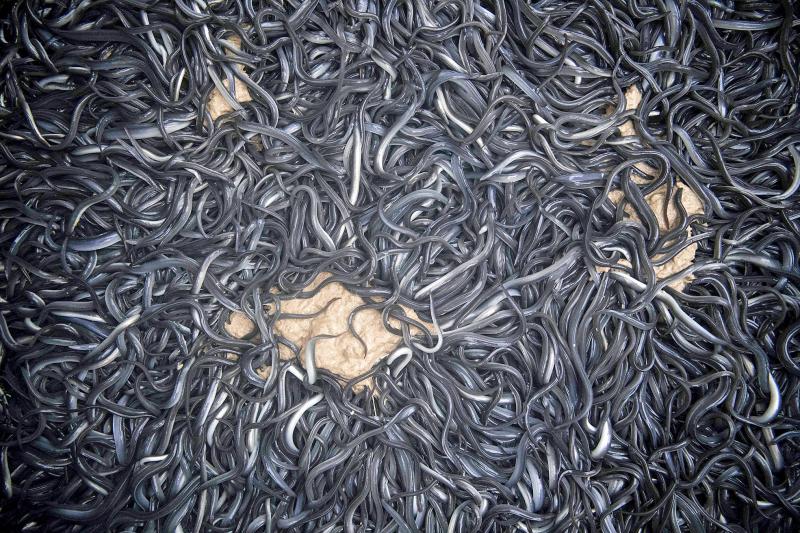
Photo: AFP
Pressures on wild stocks ranging from pollution to overfishing mean supplies have dwindled dramatically in recent decades.
While the writhing snake-like creature is repellent to some, it is a mainstay of Japanese cuisine, and since the 17th century has most often been prepared kabayaki-style: skewered, grilled and basted in a mixture of soy sauce and mirin rice wine.
In central Japan’s Shizuoka, 66-year-old Hachisuka’s restaurant in Hamamatsu City has used the same basting sauce base for four decades.
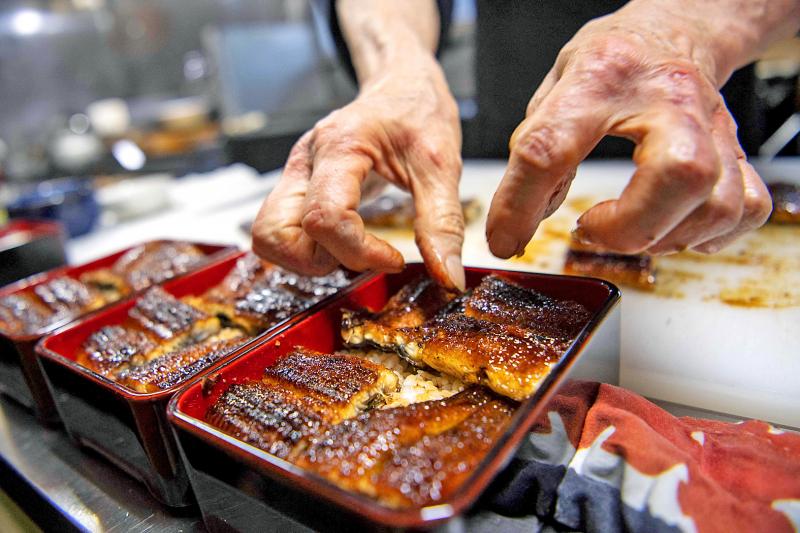
Photo: AFP
“I adjust it as I go. It mustn’t be too sweet or too salty,” he said.
But while his recipe has stayed the same, his product has not. The annual catch in Japan of young known as glass eels has fallen to 10 percent of 1960 levels.
That has driven prices sky-high, even in a country that has battled for years to achieve inflation.
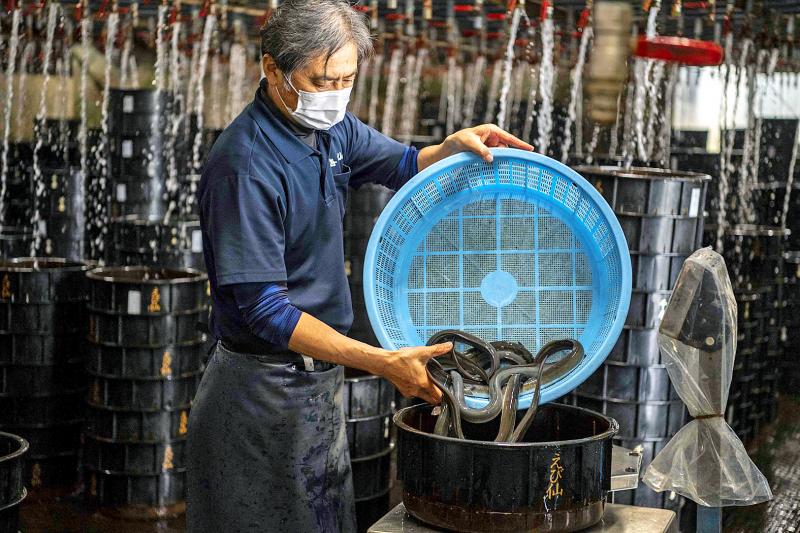
Photo: AFP
“A dish of unaju [eel on rice] is today nearly three times more expensive than when I started,” Hachisuka said.
There are 19 species and subspecies of eel, many of them now threatened.
In 2014, the Japanese eel was listed as endangered by the International Union for Conservation of Nature, which cited factors including habitat loss, overfishing, pollution and migration barriers.
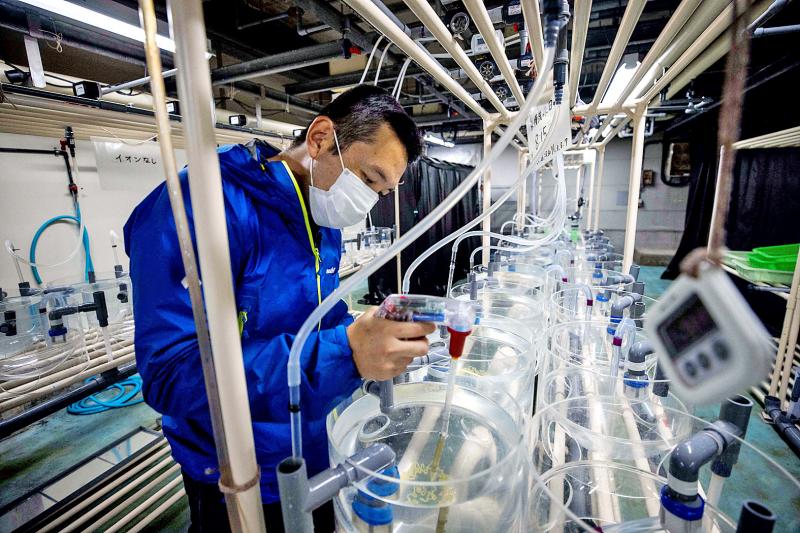
Photo: AFP
ENDURING MYSTERIES
Protecting the animal is complicated by their complex life cycle, which unfolds over a vast area, and the many unknowns about how they reproduce.
The mystery of eel reproduction has fascinated scientists for thousands of years, with even ancient Greek philosopher and naturalist Aristotle puzzling over it.
He theorized eels must simply emerge spontaneously in mud because he could find no traces of their larvae.
“We think that the eel emerged approximately 60 million years ago, near the island of Borneo,” explains Mari Kuroki, assistant professor at Tokyo University’s aquatic biosciences department.
“As continental drift affected marine currents and the distance grew between the areas where eels lived and laid eggs, the creature has adapted,” she said.
It is now present in every ocean except the Antarctic.
Yet despite their ubiquity, it was not until the early 20th century that European scientists discovered that European and American eels are born somewhere in the Sargasso Sea near Cuba, with their larvae then carried by currents to different regions.
The precise location of eel spawning sites remained an enigma until 2009, when a scientific mission pinpointed the breeding grounds of the Japanese eel, west of the Mariana Islands, about 2,000km to 3,000km from Japan’s coasts.
Evidence suggests the species mates and lays its eggs at the spot, but the process has still never been observed. Once they hatch into larvae, the creatures drift toward coastlines, growing on the way into glass eels. They swim into estuaries and rivers in Taiwan, Japan, China and South Korea, and live in freshwater habitats for between five and 15 years before swimming back out to sea to spawn, and then die.
WHITE GOLD
Eels are vulnerable to a wide range of catastrophic human behaviors, and climate change-linked phenomenon such as El Nino have affected the ocean currents that carry them, as well as their spawning sites.
The deterioration of their freshwater habitats, including by river development, also plays a significant role, along with pollution.
Dams can block migratory routes and eels are sometimes caught in hydroelectric turbines, a leading cause of death for the species.
Since 2012, scientists in the four territories where the Japanese eel is most commonly found have worked together on conservation, setting aquaculture quotas in 2015.
But restrictions, including an EU ban on exports in 2010, have created a flourishing black market, with poaching and international trafficking.
More than 99 percent of the supply in Japan consists of caught or imported glass eels raised to maturity on farms.
Last year, declared catches and legal imports of glass eels for farms in Japan amounted to 14 tonnes, according to Japan’s Fisheries Agency (JFA), but the country’s farms reported buying more than 20 tonnes of glass eels, a gap indicating the role of illicit trade.
Environmental group WWF Japan believes the true scale of the problem is even larger, estimating between 40 to 60 percent of eels raised in Japan come from illegal sources.
In Hamamatsu, the brackish waters of Lake Hamana near the sea are an ideal habitat for eels, and the hunt for the creatures takes place there each year between December and April, under a cloak of secrecy.
“The eel is the most valuable fish in this lake,” says Kunihiko Kako, a 66-year-old fisherman, holding a long net with a conical end that he uses for his catch. “So we have to be careful.”
The creature is so precious it is sometimes dubbed “white gold,” with prices fluctuating wildly depending on the catch size.
Farms paid an average of ¥1.32 million (US$11,627 at the current exchange rate) last year for 1kg of glass eel, according to the JFA, after a record of ¥2.99 million in 2018.
‘APPRECIATE EACH EEL’
With stocks falling and prices rising, eel consumption in Japan has changed, and the dish is now seen as a treat rather than a regular meal.
A record 160,000 tonnes was consumed across the country in 2000, but that figure has fallen by two-thirds. “In the past, all the meals sold at grill places and local hotel restaurants had eel in them,” says Senichiro Kamo, a seafood wholesaler on Lake Hamana.
“It was also in the bento boxes sold at stations, but since the price has tripled, that’s no longer possible,” adds Kamo, half of whose sales are of eel.
Eels of all types are notoriously resistant to breeding in captivity, and since the 1960s, Japanese researchers have worked to coax them into the mood, but without success.
In 2010, experts bred two consecutive generations of Japanese eels in a lab for the first time, a major advance.
But these “artificial” eels aren’t likely to hit the market any time soon, says Ryusuke Sudo of the Japan Fisheries Research and Education Agency in the Izu region, southwest of Tokyo.
“The biggest problem now is that the method is very expensive,” he said.
Each eel requires individual human intervention, the reproduction rate is low and creatures produced in captivity also grow slower than their wild counterparts, he said.
Researcher Kuroki believes the best way to protect the species is to make consumers more mindful.
“We need to appreciate each eel we eat, keeping in mind that this is a precious natural resource,” she said.
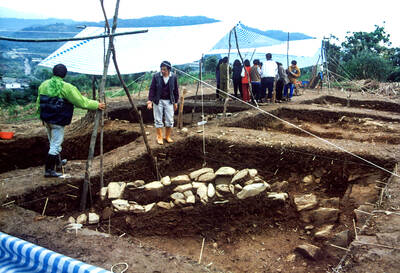
During the Metal Ages, prior to the arrival of the Dutch and Chinese, a great shift took place in indigenous material culture. Glass and agate beads, introduced after 400BC, completely replaced Taiwanese nephrite (jade) as the ornamental materials of choice, anthropologist Liu Jiun-Yu (劉俊昱) of the University of Washington wrote in a 2023 article. He added of the island’s modern indigenous peoples: “They are the descendants of prehistoric Formosans but have no nephrite-using cultures.” Moderns squint at that dynamic era of trade and cultural change through the mutually supporting lenses of later settler-colonialism and imperial power, which treated the indigenous as

By 1971, heroin and opium use among US troops fighting in Vietnam had reached epidemic proportions, with 42 percent of American servicemen saying they’d tried opioids at least once and around 20 percent claiming some level of addiction, according to the US Department of Defense. Though heroin use by US troops has been little discussed in the context of Taiwan, these and other drugs — produced in part by rogue Chinese Nationalist Party (KMT) armies then in Thailand and Myanmar — also spread to US military bases on the island, where soldiers were often stoned or high. American military policeman

An attempt to promote friendship between Japan and countries in Africa has transformed into a xenophobic row about migration after inaccurate media reports suggested the scheme would lead to a “flood of immigrants.” The controversy erupted after the Japan International Cooperation Agency, or JICA, said this month it had designated four Japanese cities as “Africa hometowns” for partner countries in Africa: Mozambique, Nigeria, Ghana and Tanzania. The program, announced at the end of an international conference on African development in Yokohama, will involve personnel exchanges and events to foster closer ties between the four regional Japanese cities — Imabari, Kisarazu, Sanjo and

A town in Japan is to urge all residents to restrict their smartphone use to two hours a day in an attempt to tackle online addiction and sleep deprivation. Officials in Toyoake, Aichi prefecture, said the measure would target not only children but also adults, amid growing concern about the physical and psychological toll excessive smartphone use is taking on people of all ages. The move aims “to prevent excessive use of devices causing physical and mental health issues … including sleep problems,” the mayor, Masafumi Koki said recently. The Toyoake municipal assembly began debating the non-binding ordinance this week ahead of a